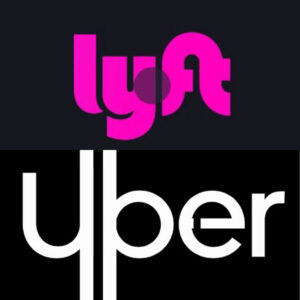 Many of us take rideshares like Uber or Lyft to get around where we live and the places we travel. Riders need to understand what steps to take and what options are available in the event of a collision. We have developed this quick list of what every person should know if you are in a collision as a rideshare passenger or if you are hit by a rideshare driver.
Many of us take rideshares like Uber or Lyft to get around where we live and the places we travel. Riders need to understand what steps to take and what options are available in the event of a collision. We have developed this quick list of what every person should know if you are in a collision as a rideshare passenger or if you are hit by a rideshare driver.
At Collision Scene
- Call the Police
Uber and Lyft drivers generally want to avoid documenting collisions, as they may suffer increased insurance premiums or negative impacts to their driver profiles. Therefore, you need to take the lead in calling the police to investigate the collision. A police report of the collision is the best way to organize the facts of what happened in the collision and to make sure that blame is placed on the actual at-fault driver. The police report also documents who was involved, and which insurance policies were active on each vehicle.
- Take Photos
Take photos of the damaged areas of all involved vehicles in the collision. By the time your adrenaline has worn off back home, you might not have access to any of the vehicles, so you need to stay focused at the collision scene and document the damage to each vehicle before everyone leaves. These photos help to prove that there was a meaningful collision impact, which reasonably caused the injuries that you suffered. Also, take photos to document where the collision took place and where the vehicles ended up.
Who Pays?
- Insurance of At-Fault Driver
If you are riding in a rideshare, and someone hits you, chances are that they are not also a rideshare driver. In this instance, you would recover from the car insurance policy of the at-fault driver. Unfortunately, sometimes a driver that hits you does not have insurance or they do not have enough insurance to cover your damages.
- Your Own Insurance
If your damages exceed the policy limit of the at-fault driver, then you can pursue your own UIM (underinsured motorist coverage) insurance if you have an amount available above the at-fault driver’s policy limit.
- Insurance of the Rideshare Driver
If you were riding in a rideshare, and the at-fault driver does not have sufficient insurance to cover your damages, you can also recover from the UIM policy (up to $1 Million) of the rideshare driver, which they are required to maintain.
If you were hit by a rideshare driver, then you pursue the insurance of the rideshare driver. Rideshare corporations have categorized its drivers as “independent contractors,” as opposed to employees, so that injured parties cannot sue the corporations directly. However, there are now Washington State mandatory minimum insurance limits in place for rideshare drivers depending on what they are doing at the time of a collision.
When the driver is logged into the rideshare application, but does not have a passenger in the car, the driver has a minimum of $50,000 per person for bodily injury that is available to pursue.
When the driver has at least one passenger in the car, the driver has a minimum of $1,000,000 in total damages available to pursue.
These increased insurance limits went into law in Washington State in 2015 and serve to fill the gap in coverage when a rideshare collision occurs.
At Benjamin Law Group, we have successfully handled and recovered cases against multiple rideshare applications and can help you through the process.